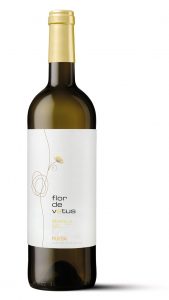This post is also available in: Spanish
How to correctly read a wine label. The label is usually a piece of paper that contains information useful to the consumer, and that adheres to the bottle. Currently there are also labels of other materials that can be placed in the wine bottle.
The label in most occasions on the only information we have about a wine before consuming it, that is why the information it contains and the way of exposing it is of vital importance.
The labels of the wines are usually two: the main label that is placed on the front and the counter-label on the back.
How to correctly read a wine label
At the time of reading and interpreting the information that contains a label we must know some basic rules of operation and behavior admitted by all wineries and wine producers.
We also want to comment that most of the information shown on a label is regulated by law, and this information can be very useful to the wine consumer.
The Design
One of the basic factors and perhaps the most important in a wine label is undoubtedly its design.
An attractive label, attracts the consumer and creates consumption expectation. The label can generate an inclination to select a wine because of the attraction it conveyed.
Therefore, its design is carefully selected and studied in each wine. It is usually accompanied by the characteristics of the wine with the label we design. This is done to create a link to the consumer in such a way that just by looking at the label, you can select the wine to be consumed.
Front label

It is the main label. Poe being in the front is the most visible and therefore must carry the most important information we want to convey.
What information does this label give us:
Name of the wine
Denomination of Origin / D.O): this information will appear, if 75% of the wine has been made with grapes from that denomination.
Add or year of elaboration Class of wine: aging, reserve, etc.
Alcohol graduation in Gay Lussac degrees (can not be less than 11, 5º)
Volume of the bottle: normally 75 cl. The product magnum is usually 1.5 L.
Rear label

On the other hand, in the posterior label we find information of the type:
• Country of origin where it occurred.
• Strains or grape varieties: when the type of grape is put, the wine must contain 75% of that grape in its elaboration. The remaining 25% can be omitted. In certain countries, as in the case of Chile, it is mandatory to put the grape on the label.
Bottling management
Packer Registration Number: from each community
Toothed seal: belonging to the Regulatory Council.
Barcode:
Lot Number
Type of wine: red, white or pink.
In sparkling wines

In sparkling quality wines, the label must include the term relative to the amount of sugar, which in turn is divided into:
Brut Nature: less than 3 g / l without adding sugar after the 2nd fermentation
Extra Brut: included between 0 to 6 g / l
Brut: less than 12g / l of sugar
In addition, it should include the term Traditional Method.
Other information
The labels are written in the language of the country where the wine was made, although with increasing frequency, we find the labels in the language of the country where it is sold.
Sometimes information is put on the production and obtaining of wine. As well as the one referring to the fermentation, and the time that has been in the different deposits, and types of deposit (steel, oak cask, etc.).
article written by J Girona
